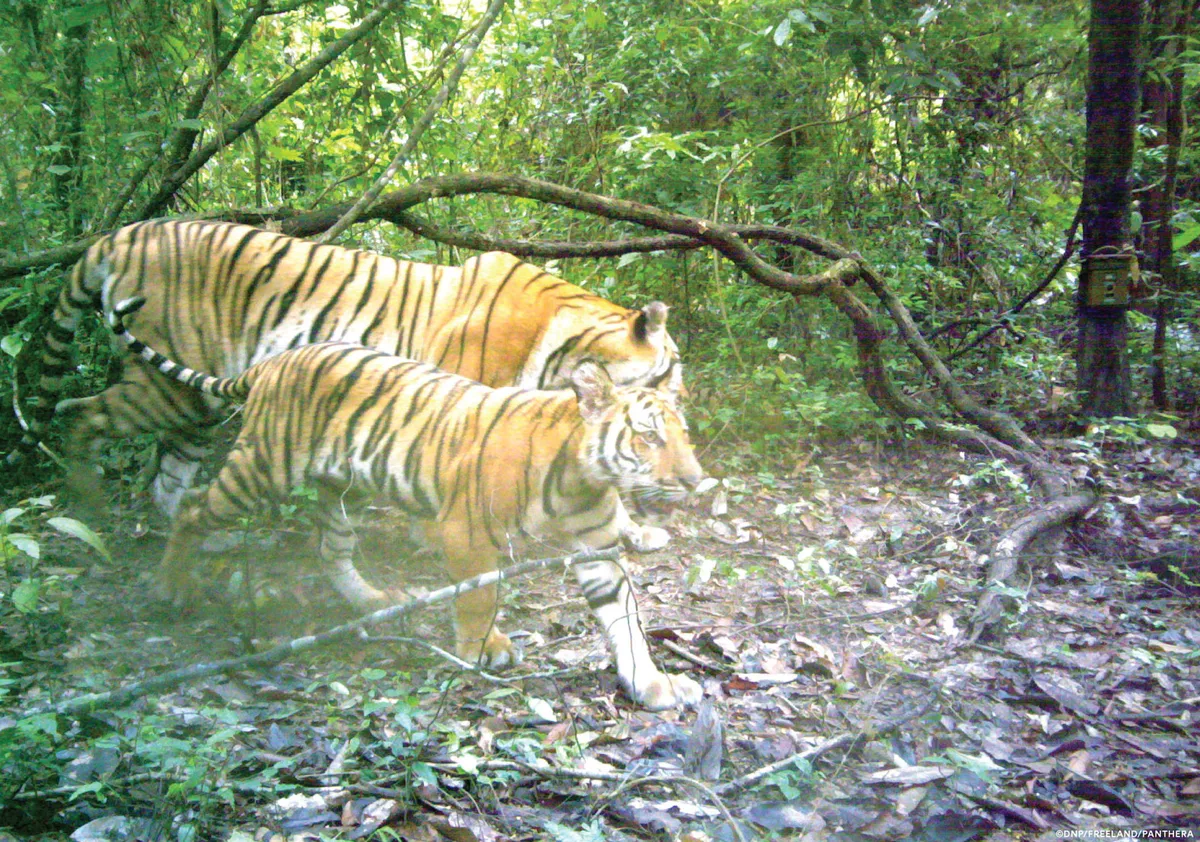Camera-trap images have captured evidence of breeding populations of Indochinese tigers in a UNESCO World Heritage Site.
Six different tiger cubs from four females have been identified, including a cub that has since been seen separately from its mother.
Raising cubs through to maturity is very difficult, so this independent cub is also an important finding for conservationists.
Watch a camera trap videos of Indochinese tigers in the forest complex:
© Freeland/DNP
It is estimated that fewer than 250 individuals of this tiger subspecies, known as Panthera tigris corbetti, remain. They are now only found in Thailand and Myanmar, and this discovery provides only the second known location for a breeding population.
Conservationists from Thailand’s Department of National Parks, Wildlife and Plant Conservation, Panthera (the global wild cat conservation organisation) and Freeland (a counter-trafficking organisation), continued to survey for tigers in eastern Thailand after many others gave up on the idea that any remained.

“The existence of tigers here was often doubted, but these recent surveys are proving its importance not only nationally but regionally and internationally as well,” said Freeland’s Kraisak Choonhavan.
It is thought the tigers were able to survive here because the forest has been recognised as a significant site for the tigers’ future and due to efforts by the national government to combat poaching.



